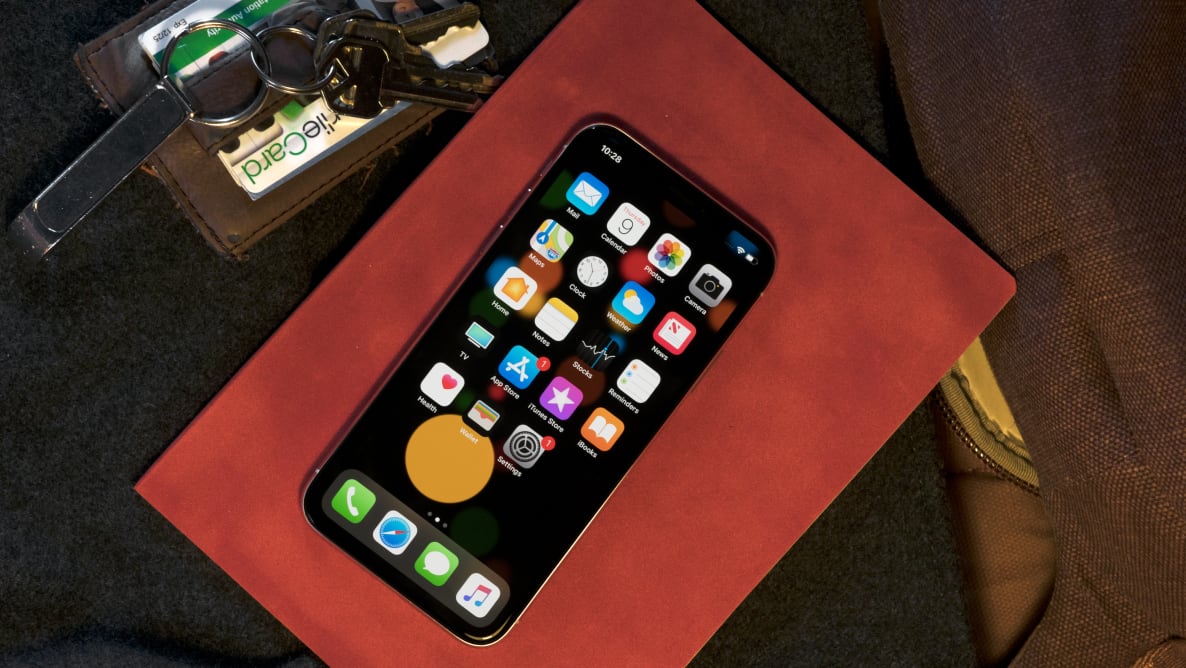Pros
Cons
But when it comes to its story, the iPhone X release is all about transformation. It represents the first significant leap in the iPhone's design in several years—one that signals the direction Apple sees its smartphone heading in the years to come.
For as much talk as new iPhones generate when Apple rests on its laurels, an even bigger (and often more contentious) discussion takes place when the company pivots in a new direction. But even though the iPhone X is closer to "radical" than "rehash," it's still fundamentally an iPhone—one with all of the good and bad elements we've come to expect from Apple's smartphones in recent years. This one just happens to cost a grand.
The iPhone X is easily the glitziest, most souped-up iPhone to date, but that doesn't necessarily make it the best. Similarly, hardcore fans of the iPhone will most likely be swept off their feet, but that doesn't necessarily make it a good choice for everyone. Owning Apple's tenth anniversary iPhone is a fun club to be a part of, but the membership is costly and its benefits will probably be enjoyed by all iPhone users in a year's time.
If you can stomach the cost, the iPhone X is a phenomenal device. If you're even a little bit gun-shy about the price tag, you're better off standing pat for another year or treating yourself to an iPhone 8 or an iPhone 8 Plus.
About the iPhone X
This year, Apple offered up three new smartphones: the iPhone 8, the iPhone 8 Plus, and the X.
From a hardware standpoint, the X is closest to the 8 Plus, since both phones feature dual cameras with special software enhancements. The most notable differences between the X and the 8 Plus lay in the overall design approach, as the X features a near-edge-to-edge OLED display and nixes Apple's iconic home button.
Here's the iPhone X at a glance:
• Apple A11 Bionic chipset • 3GB RAM • 64/256GB internal storage • 5.8-inch (1125 x 2436 pixels) Super Retina HD OLED display with 3D Touch • Dual 12MP cameras (f/1.8 and f/2.4) with optical image stabilization (OIS), phase detection autofocus, dual tone LED flash, 2x optical zoom, 4K video (up to 60FPS), and 1080p video (up to 240FPS) • 7MP f/2.2 front-facing camera with autofocus, face detection, HDR, 1080p video (30FPS) and 720p (240FPS) • IP67-rated water resistance • 4G LTE, WiFi, AC/Bluetooth (5.0), and NFC support (with Apple Pay) • 2,716mAh non-removable, lithium-ion battery with both fast- and wireless charging support • Lightning port • Face ID biometric security
Without a home button to read fingerprints, iPhone X users will have to put their trust in Apple's brand new, much-ballyhooed Face ID system for biometric security (more on that later).
This is also the first time Apple's outfitted one of its phones with an OLED display, which is widely considered to be superior to LCD in terms of picture quality and battery life (just ask Samsung Galaxy owners, who've proudly enjoyed OLED displays for years now).
Speaking of better-late-than-never additions, the iPhone X supports wireless charging, and in an uncharacteristic move, Apple went with the Qi open standard to back this feature. This means that any wireless charger built on the Qi standard—even Samsung's wireless chargers—will work with the iPhone X.
Like every iPhone since the iPhone 7 and 7 Plus, the X doesn't feature a standard 3.5mm headphone jack, so most wired headphones will have to be plugged into the iPhone X's headphone dongle, which is included in the box.
What we like
The OLED display is gorgeous—and long overdue.
In most cases, OLED displays (like the ones found on the Samsung Galaxy S8 and the Galaxy Note 8) boast better contrast and color production than their LCD counterparts. Depending on how you use your phone, an OLED display can also contribute to more conservative power consumption.
That said, getting the most out of an OLED screen requires some deft engineering and tight production. For an example of how not to manufacture OLEDs, look no further than the LG V30 and the Google Pixel 2 XL, which are haunted by minor spotlighting and uniformity issues.
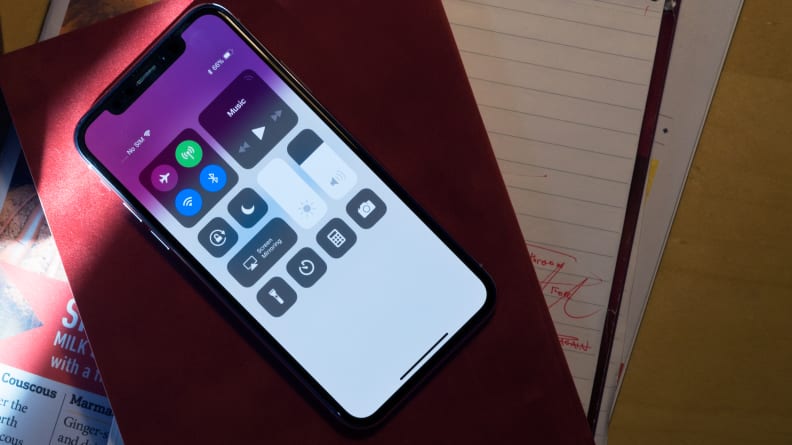
This is the first iPhone OLED display ever—and it's a thing of beauty.
Fortunately, Apple spared no expense with its OLED display—the iPhone X features a dazzling 5.8-inch screen that delivers the type of top-shelf performance we've come to expect from this relatively-nascent technology. Colors are rich, black levels are deep, and photos taken on the X really pop. I love it.
Passionate Samsung Galaxy fans will surely scoff at Apple championing this display tech several years after Samsung made OLED screens one of the signature features on its flagship phones, and frankly, they're not wrong. The LCD "Retina" displays on iPhones as recent as the iPhone 8 weren't bad by any stretch of the imagination, but the benefits of OLED have long since been canonized across the tech industry, for TVs, laptops, and smartphones alike.
The bottom line, however, is this: Apple finally ushering in the era of OLED iPhone displays is a good thing for consumers.
Fantastic performance with killer battery life

The iPhone X's A11 Bionic chip coupled with iOS's silky-smooth interface is smartphone bliss.
Our iPhone 8 Plus review gave us a sneak-peek at Apple's latest A11 processor—dubbed "Bionic"—which tore through our hardware benchmarks and delivered speeds worthy of its vaguely intimidating namesake.
The iPhone X features the same GPU/CPU set-up, and coupled with a relatively svelte 3GB of RAM, harmonizes beautifully with iOS 11. In practice, there's just never a moment where the iPhone X isn't zipping along, regardless of how fast you cycle through apps. From a performance standpoint, this phone can handle anything you happen to throw at it.
With the smartphone industry currently locked into a battery capacity arms race, the iPhone X's modest 2,716mAh battery might seem light compared to the Galaxy Note 8's 3,300mAh offering or the 4,000mAh battery found in the Huawei Mate 9, but as we've discussed in the past, there's more to a device's potential battery life than the capacity of the batteries themselves.
The iPhone X is yet another example of Apple wringing out as much power as possible from a lithium-ion battery that only looks disadvantaged when read from a list of specs. In our battery test—which puts each phone through a heavy workload until the battery's depleted—we measured just over eight hours of runtime. For comparison, the Galaxy Note 8 delivered nine and a half hours, the iPhone 8 Plus clocked in at around ten and a half hours, and the iPhone 8 logged around seven hours and 50 minutes.
It's important to remember that this test is not designed to be representative of a normal day of use, but instead, to measure each phone's performance in relation to one another. In the real world, I've come to expect just over a day of battery life from the iPhone X with moderate use and about a day and a half when my smartphone use is light.
A best-in-class camera experience
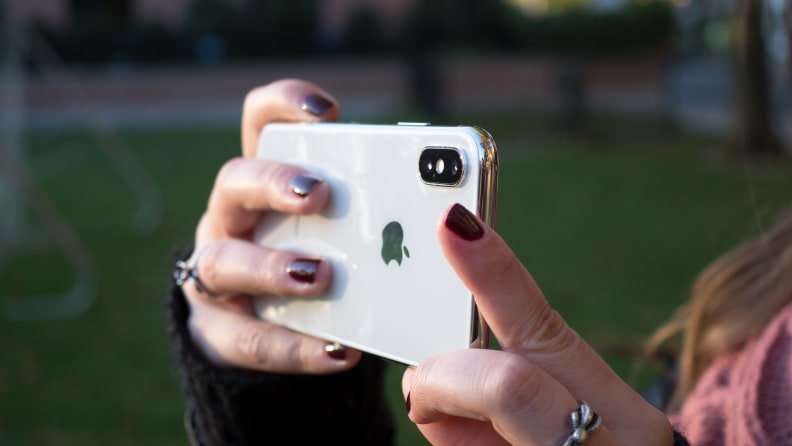
This is the best iPhone camera to date.
All right, time for the fun stuff.
The iPhone X's dual-camera rig is quite similar to the iPhone 8 Plus's set-up, but the iPhone X features optical image stabilization (OIS) on both the wide-angle and telephoto lenses, as opposed to the 8 Plus, whose OIS functionality is limited to its wide-angle lens.
Some smartphones use two camera sensors that fire at the same time, with the combined image ostensibly preserving more of the photo's finer details. Smartphones like the LG V30 let you choose between each of the two lenses, with the wider-angle lens allowing for more subjects in a single frame.
Like the iPhone 8 Plus and the 7 Plus before that, the raison d'être of the iPhone X's dual camera system is Apple's Portrait Mode. Both sensors work alongside Apple's imaging software to create evocative shots that plunge a subject's background into artful, out-of-focus softness. Like the 7 Plus and the 8 Plus, the iPhone X sometimes struggles to capture the edges of a subject (particularly around heads of hair), but the X has the highest rate of success I've seen since Apple rolled out the feature last year.

Smile! The iPhone X's selfie camera features Portrait Mode, too.
The iPhone X's dual cameras also allow for a handful of lighting adjustments that range from subtle ("Studio Light") to dramatic ("Stage Light" and "Stage Light Mono"), though I don't find myself taking advantage of the stage light effects nearly as much as I use the standard portrait effects. For the first time, the iPhone X's front-facing, 7-megapixel camera is also equipped with these portrait effects. Selfies have never looked this good.
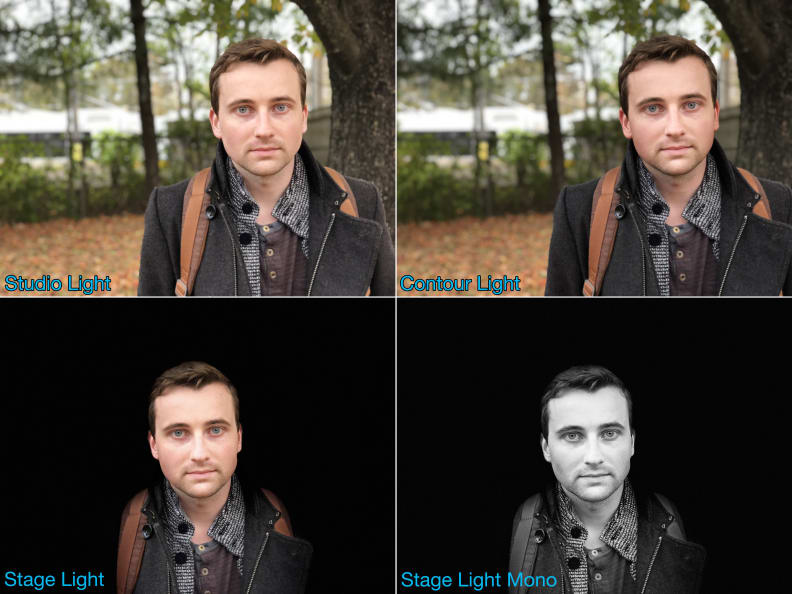
You can use Portrait Mode on its own or choose from one of these four special lighting settings for added effect.
Its fun features aside, the iPhone X is equipped one of the best-performing smartphone cameras in the game. Although the photos aren't as richly saturated as those shot on the Galaxy S8 and the Galaxy Note 8, to my eye, Apple is slowly moving its smartphone cameras away from the more true-to-life color production we've come to expect from the iPhone. The iPhone X produces shots with a slightly warmer, more vibrant color palette. This new color palette—combined with the iPhone X's ability to retain more detail than the cameras found on its predecessors—amounts to the best iPhone camera performance to date.
In low light settings, the iPhone X performs about as well as the 8 Plus, maintaining a good amount of detail without crushing the images with overly-aggressive noise reduction.
{{ photo_gallery name="Apple iPhone X Sample Photos" fullscreen="true" }}
The best thing I can say about the iPhone X's camera experience is that it's just a blast. If you're the type of person who can't stop snapping photos with your smartphone, the X makes the endeavor all the more rewarding. Using the X in conjunction with an app like Instagram is preposterously fun—it makes everything from food shots to selfies absolutely sing.
Animojis are absolutely ridiculous and I kind of love them.
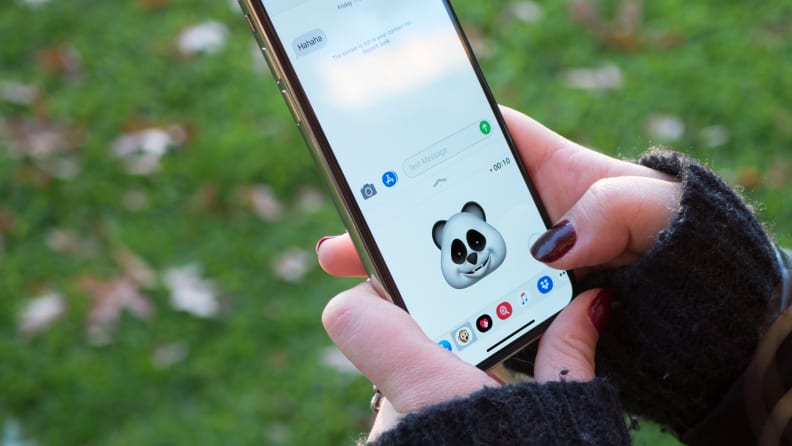
Don't underestimate the appeal of Animojis—they're strangely addictive.
Given the mind-blowing complexity of the iPhone X's facial recognition hardware, it's somewhat charming that the hardware's most immediately rewarding feature is one where you take control of a panda's face and make it laugh, cry, and sing songs to people.
Animojis can be accessed via iMessage and sent to everyone on Apple's messaging platform, regardless of whether or not the person on the other end is also using an iPhone X (you can also export them as .mov files). The feature works surprisingly well, with results ranging from uncanny to gut-bustingly funny, especially if you're as easily amused as I am.
What we don't like
Despite its "premium" feel, the physical design is somewhat lacking.
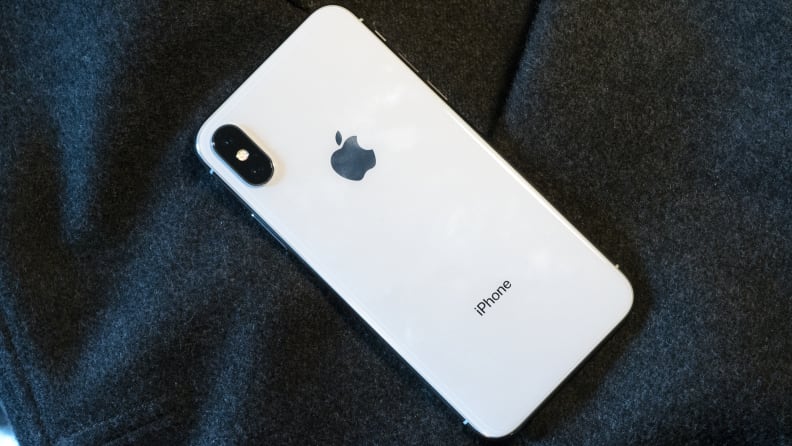
The iPhone X's glass back makes it slippery, smudgy, and susceptible to cracks.
Look, no one on earth is going to mistake the iPhone X for a mid-range phone—it practically screams "I'M VERY EXPENSIVE!" But despite the amount of care and consideration that clearly went into every inch of this phone, it's still got some hang-ups in the design department.
The iPhone's been rocking a camera hump for several generations—the lilliputian iPhone SE was the last iPhone to feature a camera flush with the phone's back casing. But while the 7, 7 Plus, 8, and 8 Plus all manage to keep their protrusions to a minimum, the iPhone X's camera hump is quite chunky, and the severity of the hump means the iPhone X is wobbly when it's face-up on a surface. To make up for it, Apple went ahead and wrapped the damn thing in chrome. Cool? I guess?
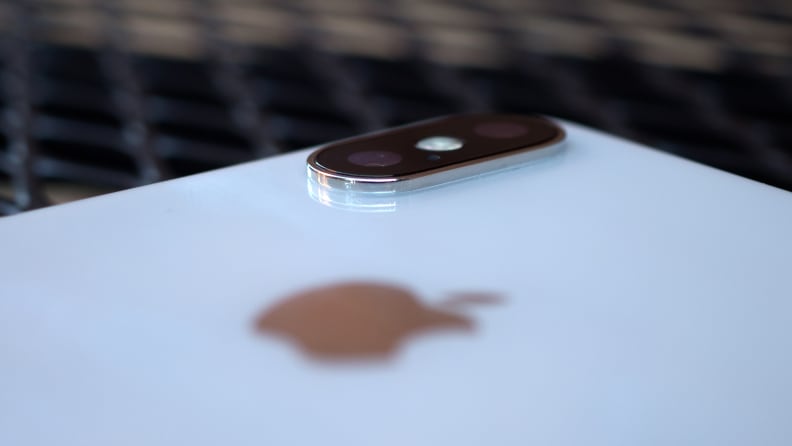
The camera hump is big, chunky, and wrapped in chrome.
Like the other two iPhones released this year, the back of the X is made entirely of glass. Does it look good? Sure—in the first fleeting moments after a good wipe-down from your shirt. The glass is a smudge magnet, and on certain surfaces, the X has a habit of slip-sliding towards the nearest ledge. I imagine most people will be outfitting their $1,000 smartphone with a case, but the brave few who abstain will find themselves constantly polishing away fingerprints and hoping their glass-slab-of-a-phone doesn't crack whenever it takes even the smallest of tumbles.
The front of the phone is quirky, too—but not in a good way. In order to accommodate for the X's Face ID components and its selfie camera, Apple parked them inside of an unsightly black notch that juts out into the otherwise-gorgeous display.
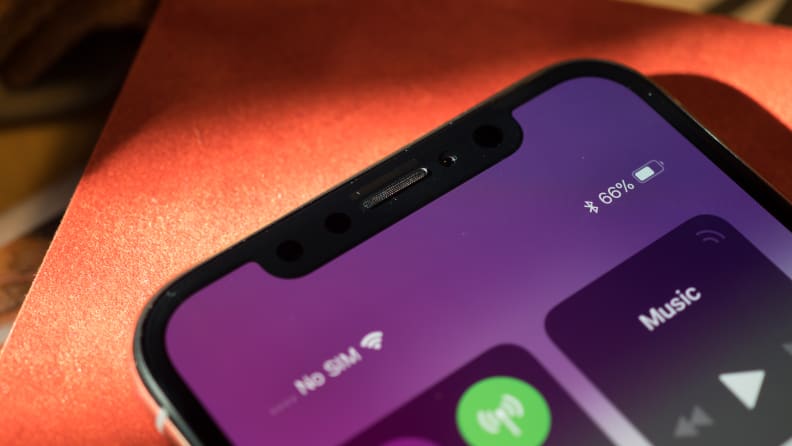
I hate to be "that person," but that notch is seriously ugly.
Cosmetically speaking, it's irritating, and when the phone's in use, it can be downright intrusive. Developers just haven't had enough time to factor its existence into their apps elegantly.
And then there's the iPhone X's lack of a headphone jack. It's nothing new, of course; we've been editorializing our disappointment with this development since last year. It's the least user-friendly aspect of the iPhone X, and it's the most common concern I hear from people who are on the fence about committing to a new iPhone.
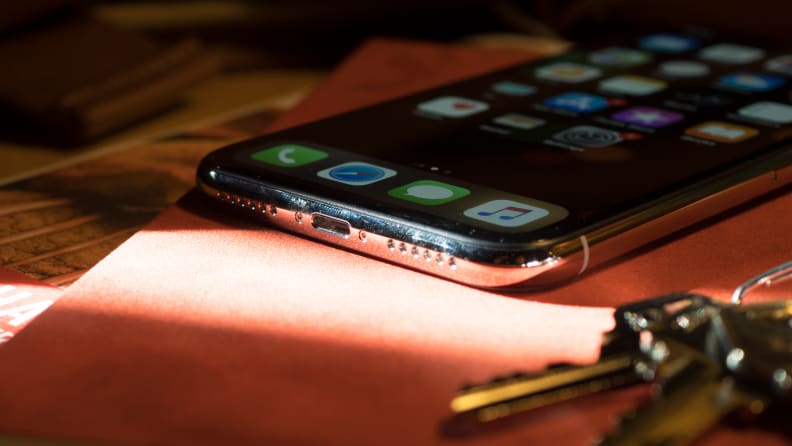
If you don't have wireless headphones, you're gonna be living that dongle life.
Navigating iOS is a bit of a chore without a home button.
The biggest difference between the iPhone X and previous iPhones is the complete omission of Apple's home button—a staple of the iPhone experience for as long as there's been an iPhone experience. Breaking up with the home button means completely changing the way you interact with iOS, and like any break-up, the change in lifestyle is often the hardest part.
I admit that in my short time with the X, I've grown fairly accustomed to the new way of doing things: swipe up for the home screen and swipe up and hold to view/cycle through all of the opened apps.
But these exercises aren't always easy since they rely on similar gestures rather than punctuated button presses. Part of me wonders if, sometime in the future, Apple will introduce some sort of invisible "button" that responds to the bottom third of the display being pressed. In other words, a home button in every sense, just without the button itself.
Since a swipe-up motion on the bottom of the screen controls apps, the iOS control center has been relegated to the top-right corner of the display. Swiping down instead of up to access the command center doesn't seem like it'd take much of an adjustment, but then you realize that you've never really had to deal with basic commands being tethered to a single corner of an iPhone display rather than one of its four sides.
Think of it this way: The home button accounted for several basic inputs that didn't require touching the display. Without it, those inputs are fighting for space inside the toolbox of on-screen gestures.
Face ID has its drawbacks.
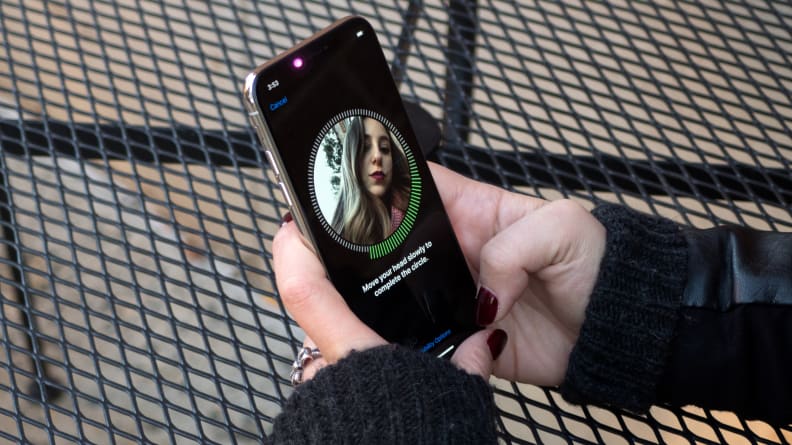
Face ID takes less than a minute to set-up. In practice, it works better than expected, but it's not perfect.
First, the good news: Face ID works far better than I expected it would. Eight(ish) times out of ten, the iPhone X recognizes my face almost instantaneously—so fast, in fact, that I usually never even register that it happened.
I suppose I just never realized how often I unlock my phone before I'm even looking at it. With my iPhone SE, for example, my thumbprint is scanned while the phone is traveling from my pocket to its final resting spot in front of my face. The iPhone X asks that you take the time to look at the display first, and even though the difference can be measured in mere seconds, the iPhone X still fundamentally changes the rhythms associated with activating your phone.
But the biggest rhythmic upset happens when the iPhone X is sitting flat on a table next to where you're sitting. At angles like these, the Face ID is just not going to catch your face, so say goodbye to the days of checking texts or emails without lifting your phone and tilting it towards you.
It's a thousand freakin' dollars.
There's no way around it—we have to talk about the iPhone X's price tag.
The 64GB base model will run you $999 plus tax—roughly $50 more than the Galaxy Note 8, the X's chief competitor. Since iPhones don't offer expandable storage, you might be inclined to spring for the 256GB model, but that one will set you back $1,149. Yikes.
If you're part of Apple's upgrade program and you've paid off enough of your old iPhone, the iPhone X's steep price might be easier to stomach. That said, you'll still be on the hook for roughly $50 to $57 per month (for 24 months), and that ain't exactly cheap.
Flagship smartphones have always come at a high cost, but the iPhone X is in its own category. Between its infrared Face ID sensors, its notoriously difficult-to-manufacture OLED display, and its top-shelf camera hardware, Apple crammed a whole bunch of pricey stuff into the iPhone X. But here's the thing: Once Apple gets a better grip on its supply chains (particularly when it comes to its OLED displays, which are likely sold to the company at a ridiculous premium, courtesy of Samsung), the iPhone X's most enticing features will be as much a part of the iPhone experience as 3D Touch is today.
But the question remains: Is it worth it?
Should you buy it?
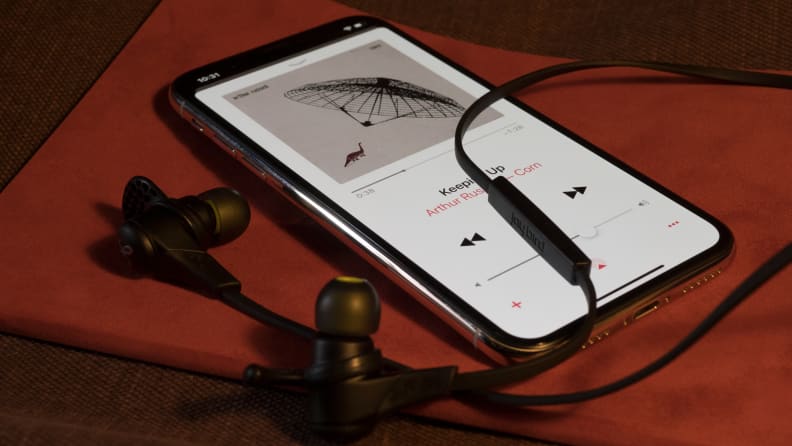
From a hardware standpoint, the iPhone X is possibly the best iPhone ever made. But it's not for everyone.
Yes, but only if you absolutely can't help yourself.
For Apple's most passionate loyalists—the ones who upgrade their iPhone once a year, possibly after waiting in line for hours on the sidewalk—there's a certain kind of magic about unboxing and setting up a new Apple device. Heck, I end up reviewing dozens of phones per year and even I'm not immune to the warm-and-fuzzies I feel when I test-drive Apple's latest flagships.
For some, money's no object—the new iPhone is the new iPhone, and budgeting for an upgrade is an annual tradition. The excitement of owning the newest and best iPhone is strong with these folks. Those are the people who should (and probably will) purchase the iPhone X.
And there's nothing wrong with being that type of consumer! By all means, follow your bliss. The iPhone X is one of the best smartphones money can buy and features the best iPhone camera available. If you can make it work within your budget, you'll probably be very, very pleased with it.
That said, if you're still trying to decide between the iPhone 8, the iPhone 8 Plus, and the iPhone X, you're probably better off pocketing some savings and skipping the X. Exclusive features like Face ID, animated emojis, and the big ol' OLED display are bound to find their way into subsequent iPhone releases. If you can stand waiting—especially if your current iPhone is still relatively new—you probably should.
Another decent reason to spring for the X is if you love the idea of a giant screen but don't care for the 8 Plus's giant, sometimes-cumbersome form factor. The X's screen-to-body ratio makes using a phablet-sized iPhone much easier.
For the rest of us, however, becoming a member of the iPhone X club is a lovely idea in theory, but a daunting idea in practice. For better or worse, there's simply never been an iPhone more clearly aimed at the hardcore crowd than this one.
Related Video
Meet the tester
Michael Desjardin graduated from Emerson College after having studied media production and screenwriting. He specializes in tech for Reviewed, but also loves film criticism, weird ambient music, cooking, and food in general.
Checking our work.
Our team is here to help you buy the best stuff and love what you own. Our writers, editors, and experts obsess over the products we cover to make sure you're confident and satisfied. Have a different opinion about something we recommend? Email us and we'll compare notes.
Shoot us an email
